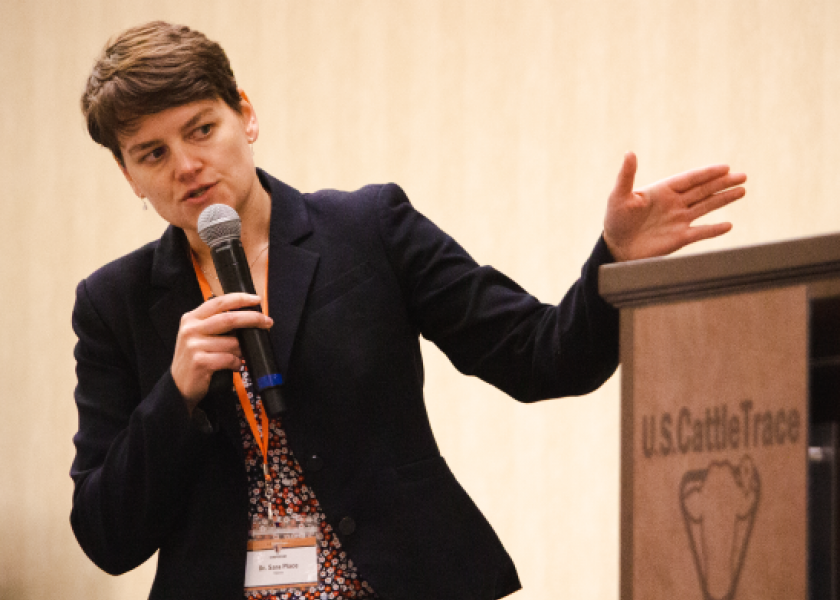Climate Neutrality Can Be Achieved And Cattle Traceability Can Help

Traceability can play a key role in helping the beef industry reduce greenhouse gas emissions. That’s according to Dr. Sara Place, Chief Sustainability Officer, Elanco Animal Health, who delivered the presentation “Beef Cattle Production’s Road to Climate Neutrality” during the CattleTrace Annual Symposium in Wichita, KS, Nov. 19.
Animal agriculture is responsible for about 4% of U.S. greenhouse gas emissions, Place said.
Enteric methane emissions account for 56% of total U.S. beef cattle production, with cow-calf production accounting for 77% of enteric methane emissions. Producers have opportunities to lower emissions through improved production efficiency, reduced mortality, increased digestibility of feedstuffs and new innovations to inhibit methane.
Feed and soil emissions account for 24% of total emissions mostly through soil nitrous oxide. Improvements in crop yields, optimized fertilizer use, and the integration of cattle and crops can reduce those emissions.
Becoming more energy efficient, Place said, will allow the industry to decrease the 17% of emissions caused using fossil fuels and inputs. Manure emissions are only responsible for 3% of total emissions through manure nitrous oxide and methane. Emissions can be improved through manure management strategies and innovations customized to each operation.
Beef producers have the opportunity for carbon sequestration through their use of pasture and rangelands and feeding row crops to cattle. Pasture and rangelands present opportunities to maintain soil C stores and increase soil through management and re-establishment on highly erodible croplands. Carbon sequestration can happen through feeding row crops to cattle as it increases no-till/reduced tillage practices, increases cover crops and allows for cattle to be integrated with other livestock. The beef industry can achieve Net Zero Climate Impact through reducing emissions while maintaining and enhancing sinks.
“We do not have to achieve zero emissions to improve climate impact. We have to reduce emissions per head, not just per pound of beef,” Place said.
Climate neutrality for the U.S. beef industry can be achieved through cattle traceability. Producers can attach key parameters of genetic potential for enteric methane and feed additive use to an animal’s individual or lot ID to differentiate and create a tangible value based on sustainability outcomes. However, beef producers need tools to achieve sustainability such as new technologies for enteric and the development of an enteric methane trait that can be added to a selection index.
Methane is a heritable trait and producers can select animals with lower methane emissions through the traceability of lower emitting genetics, Place said. Additionally, producers need the marketplace to drive value for both delivery of sustainability data and continuous improvement over appropriate time frames within supply chains.
“The traceability of animals is there but we need traceability of feed through innovation. Feed is 50% of all feedlot emissions,” said Place.
Place left attendees with a positive outlook on achieving sustainability in the U.S. beef industry. Climate neutrality for beef cattle production is likely possible and technically feasible but, it requires new innovations. It is important that beef producers do not lose focus of other aspects of sustainability. Cattle production is a critical source of nutrition and ruminant benefits to sustainability are substantial as they allow for optimum land use, upcycling, and wildlife suppression.







